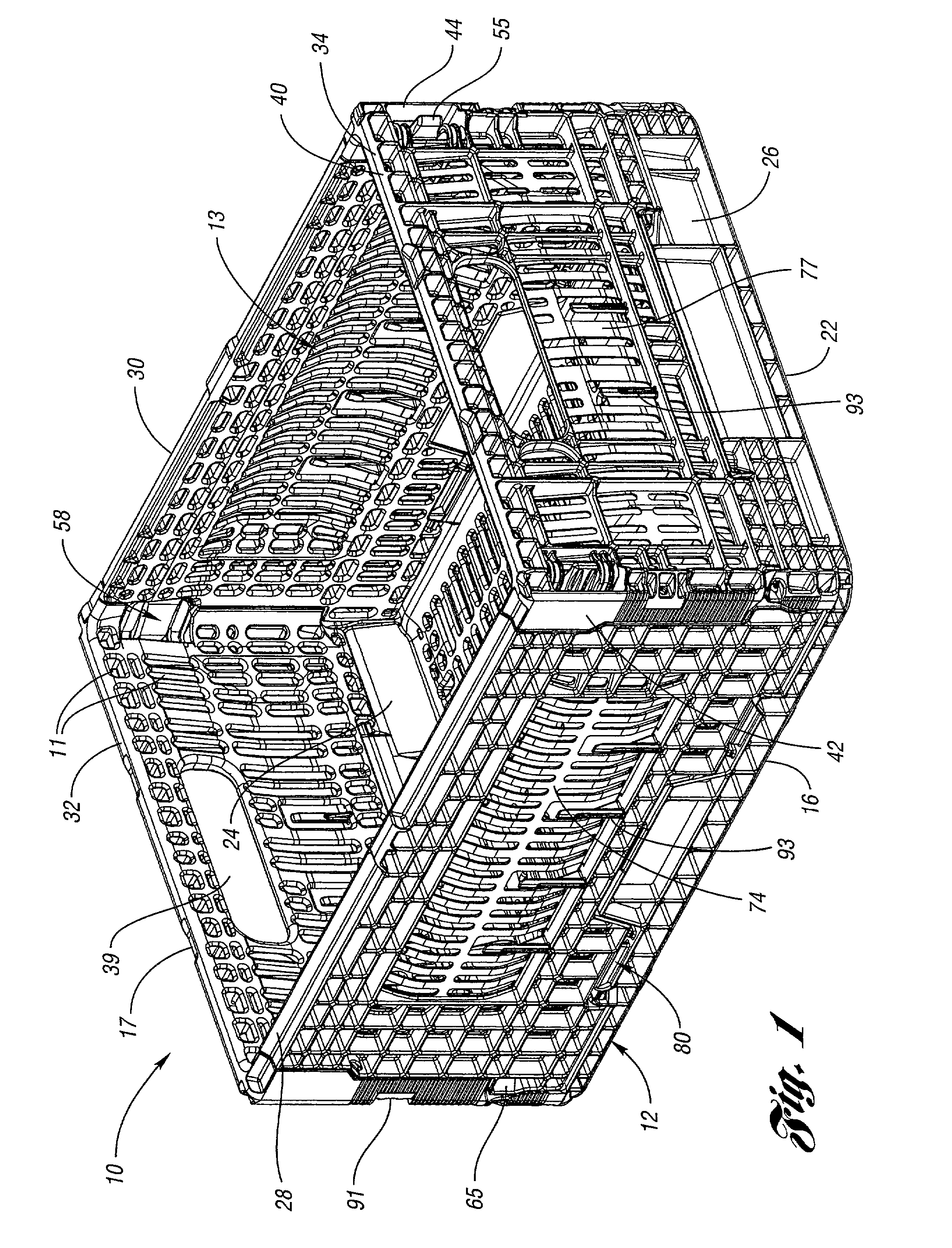Container
a container and container base technology, applied in the field of containers, can solve the problems of lack of stability and strength, less rigid container, and large load on the container base, and achieve the effect of more volum
- Summary
- Abstract
- Description
- Claims
- Application Information
AI Technical Summary
Benefits of technology
Problems solved by technology
Method used
Image
Examples
second embodiment
[0106]FIG. 26 illustrates a top perspective view of a base 112 of container 110, while FIG. 28 is a bottom perspective view of base 112. FIG. 27 is a cross-sectional view taken along the line 27—27 of FIG. 26. Referring to these drawings, base 112 has a bottom panel 114 which includes at least one curved portion—and preferably two curved portions 141, 143—which extend between edges 116 and 118, the curved portions being bowed upward with a relatively slight arcuate shape, instead of having a typical flat profile. This curved portion is illustrated to be wave-like or sinusoidal, and disposed in the central portion of bottom panel 114. This bowed feature of bottom panel 114 serves to add stability to the container and augment the life of the container, as well as provide protection to the contents of containers stacked therebelow. Particularly, when container 110 is filled or has goods placed therein, the weight of the goods will exert load upon bottom panel 114. Under this load, the ...
first embodiment
[0107]FIG. 29 is a side elevational view of container 110 in an assembled orientation, as in FIG. 25. As illustrated, like the first embodiment, container 110 also includes notch 191 for the palletizing straps, and further includes the portion of side walls 128, 130 which extends into and mates with a corresponding recess 146 in the corner region, proximate the corner hinge connection. FIG. 30 is an end elevational view again illustrating features of end wall 134.
[0108]FIG. 31 illustrates container 110 in an inwardly folded orientation. As FIGS. 31 and 32 indicate, the design according to the present invention allows container 110 to be compactly folded for storage and transport. In this orientation, side walls 128, 130 are pivoted inward via hinging mechanisms 180 and folded in a layered fashion on top of bottom panel 114. FIG. 32 illustrates that side walls 128 and 130 are folded first, and subsequently, end walls 132,134 are folded inward on top of side walls 128, 130 via hinging...
third embodiment
[0120]Accordingly, base 310 is a flexible platform or member which is adapted to conform generally to the natural shape of the banana bunch 300 or other produce or objects resting thereupon. FIG. 39 illustrates the general mating of the base 310 and the objects 300. Such a base 310 supports bananas 300 and also allows for bananas 300 to be shipped “hands-up” referring to the banana bunch's natural shape, as illustrated in FIGS. 47, 48, and 49. In the “hands-up” orientation, flexible base 310 may easily conform and mate with the natural shape of the bananas. In many cases, retailers often display bananas in the “hands-up” position. Therefore, these same retailers may desire that the bananas be shipped in the “hands-up” orientation in the container, which allows them to arrive display-ready. However, as represented by container 210, bananas may otherwise usually shipped in a “hands-down” orientation, resting on their tips 302 and crowns 304. Of course, as previously noted, flexible ba...
PUM
 Login to View More
Login to View More Abstract
Description
Claims
Application Information
 Login to View More
Login to View More - R&D
- Intellectual Property
- Life Sciences
- Materials
- Tech Scout
- Unparalleled Data Quality
- Higher Quality Content
- 60% Fewer Hallucinations
Browse by: Latest US Patents, China's latest patents, Technical Efficacy Thesaurus, Application Domain, Technology Topic, Popular Technical Reports.
© 2025 PatSnap. All rights reserved.Legal|Privacy policy|Modern Slavery Act Transparency Statement|Sitemap|About US| Contact US: help@patsnap.com



